Pipeline vs. Rail vs. Truck Oil Transportation: Which Mode to Choose
When discussing segments of the global energy infrastructure that focus on oil transportation, one should keep in mind the movement of crude oil and the operation of transport and consumer distribution services that cover refined petroleum products. With that said, the movement of oil by means of a pipeline, train, or truck constitutes a transport modality. For the purposes of this research, the article focus will be on the differences regarding the oil and gas transportation on the applicable measures of operational safety, cost, effectiveness, and environmental consequences caused by transport.

Understanding Pipeline Oil Transportation
Pipeline transportation consists of two parts. The first, is a system of pipes that are either laid on the surface or buried underground, and the second, are the transport systems that channel oil to different distribution points, storage, or processing facilities. The first system services production areas or oil fields. The continuum of parts can be constructed to cross multiple national borders to support the distribution of oil and gas products services on a global scale.

Advantages
- High Capacity and Operational Efficiency
While construction is active and during the extended operational period, pipelines can be employed to effect the transport of large volumes of oil and gas products. This is done on an uninterrupted basis during a standard operational period of a week. The unmanned, automated, and on a consecutive system uninterrupted, operational framework of pipelines gas and oil transport systems construction means that the outlay benefits are primary. The only costs that accrue operationally are the end of the range kilometer offset costs, which are primary, because the cost recovery services of rail and road truck systems is provisioned.
- Safety
Pipelines are deemed safer than other methods of oil transport such as railroads and trucks since they are less likely to encounter accidents or spills. Risk of leaks may occur but modern day pipelines have leak detection monitoring technology. Pressure sensors and other real-time monitoring systems pipelines have are designed to detect leaks and automated shutoff valves are designed to prevent spills and minimize damage to the environment.
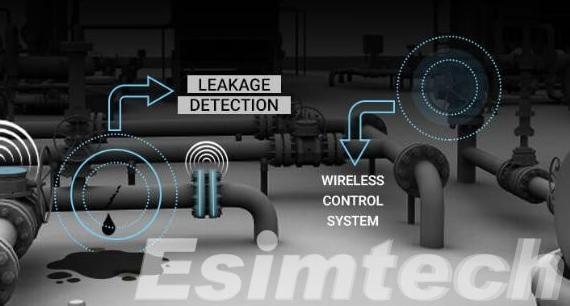
- Lower Environmental Impact
Pipelines are also safer and have a lower environmental impact. While pipelines are powered by electricity and mechanized techniques which require fewer greenhouse gas emissions than diesel powered trucks and trains, they also use less powered emissions than other oil transport methods. Moreover, since pipelines are often buried underground, they minimize disruption to the surrounding landscape. For large-scale oil transport, pipelines reduce airborne pollution as rail and road transport increases it, thereby lessening traffic congestion.
- Security
Relative to rail or truck systems, pipelines have an increased level of security, as the latter modes of transport systems are prone to theft, accidents, vandalism, and have a higher risk of loss. Once a pipeline is operational, the security requirements from personnel are minimal. Pipelines are also hard to access, and the risk of theft is much lower compared to trucks that travel on public roads, are exposed to hijacking, and are involved in accidents on a daily basis.

Limitations
- High Initial Capital Investment
Pipelines are costly as they require extensive capital in land acquisitions, building the infrastructures, obtaining government permits, and the entire construction process which can take years to finish. Capital requirements can be burdensome compared to rail and truck transport which have a lower capital outlay to position transport infrastructure.
- Inflexible
Pipelines are rigid infrastructural systems. They cannot be inclined, as are rail and truck systems which are transportable and can be changed regarding a demand to suit commercial requirements. Reworking an existing pipeline to suit changed transport requirements is costly and time-consuming, making this infrastructural type less suited to short-term rapidly changing transport needs. Once a pipeline route is established, it cannot be easily altered.
- Environmental Risks
Pipelines may be statistically safer than rail or truck transport, but they are still susceptible to damage. Leaks or spills result from poorly maintained and aging infrastructure, natural disasters, construction activities, and third-party tampering, which include vandalism. Irreparable damage to sensitive ecosystems may result from spill incidents in aquatic and terrestrial wildlife habitats.
- Regulatory and Political Challenges
Considerable opposition from local societal structures, civil society organizations, and political entities directed at pipeline constructions and expansions results from community concerns over potential consequences for ecosystems, land ownership, and community health risk. Public demonstrations and judicial contests that impede or stop the advances of proposed developments are common. Oil transport risk is also borne by international political relations, especially in the event of overt or covert conflict, directed at highly charged or contested regions.
- Not Suitable for Short-term or Small-scale Oil Transport
The construction of a pipeline entails losses which are economically indefensible in regions where oil production is volatile and inconsistent. In such circumstances, it is more economical to transport oil by rail or truck, especially over shorter distances or smaller quantities, which is more economically flexible and entails lower initial construction costs.
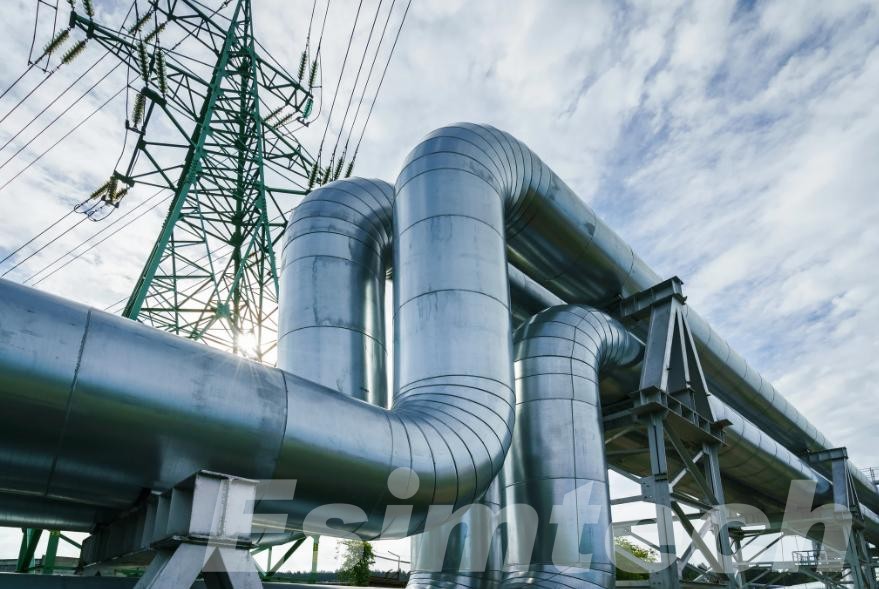
Understanding Rail Oil Transportation
Rail oil transportation uses designated freight trains equipped with tanks cars constructed with steel or aluminum to transport oil. These trains can take on long stretches of crude oil or refined products and move along prescribed railway networks. In the absence of feasible pipelines, rail transport is particularly important in a given area.

Advantages
- Flexibility
Pipelines have a fixed route, while rail networks do not. Rail transport is also not bound to a fixed route. Rail networks stretch to a range of endpoints, especially in areas lacking feasible pipelines. This characteristic is especially useful in oil transportation to remote and isolated regions.
- Speed
Transcontinental rail lines allow trains to move faster than trucks, especially when large volumes of oil are transported. Predictable timelines are a distinctive characteristic of rail transport when compared to the road transport, which is also a scheduled transport and is subject to delays and time wasting traffic. Rails are also predictable as they do not have sudden unscheduled changes.
- Large Capacity
Most trains can transport very large volumes of oil, particularly those that have been adapted with specialized tank cars that are designed for bulk liquid transport. A single train can transport thousands of oil barrels, considerably reducing the transport needs of several oil truck shipments. This form of transport works efficiently for varying large transport needs of oil overland. This is particularly true for large-scale oil transport when there is no access or the oil piping system is too costly.
- Moderate Initial Investment
New rail lines can be costly, but rail systems are already established in several areas. This makes the modification of current rail networks for oil transport, as well as the addition of new tank cars, considerably more affordable than the building of new oil transport piping systems, which involves expensive land acquisition, permit acquisition, and building prolonged environmental assessments.
- Safety
New rail cars designed for oil transportation have added significant advanced safety systems, including reinforced structures designed to help withstand accidents and contain liquid oil, thus making spills more manageable. Though rail accidents are a possibility, large scale disasters are a lower possibility when compared to truck road transport, where oil spills and accidents are considerably more common.
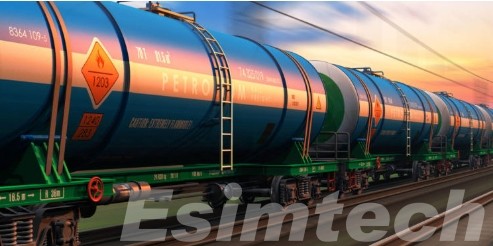
Limitations
- Long-distance Transport
The greater cost of rail transport is a considerable disadvantage when compared to pipelines. This is due to rail transport operational costs comprising fuel, railcar maintenance, and labor costs, as well as transport scheduling. Long-distance transport of large volumes of oil makes rail transport less viable as operational costs can escalate rapidly.
- Safety Concerns
Crude oil transport by rail is safer than by truck, but rail transport of crude oil still involves safety risks. Although less frequent, oil transport rail car derailments can be deadly. Late crude oil transport safety regulations and safety measure implementation failure heightened the public risk of accident transport crude oil derailments. This risk increased when crude oil was transported through populated areas due to the high-profile public safety risks of rail transport accidents involving fires and explosions.
- Impact of Congestion and Delays
Congestion and delays are common in rail transport. Within busy rail corridors, rail transport shares tracks with oil, freight, and passenger trains, and can get congested when there are competing time schedules, track space, and even weather and maintenance issues. In contrast, pipelines move oil in a more dedicated, uninterrupted manner. Disruptions in rail transport can be more common than pipelines because of the competing schedules and lack of dedicated routes.
- Environmental Impact
Although rail is more energy efficient than trucking, it still emits more than electrically powered or more efficient, economically battery-powered pipelines. Diesel engines are also still used in rail transport and emit greenhouse gases and particulate matter, which are primary contributors to air pollution and climate change. For oil transport, especially in large volumes, rail is still less environmentally friendly than pipelines.
- Capacity Limitations
The transportation system used for crude oil by rail is limited by the amount of oil a train can carry, the storage capacity of the individual railcars, and the number of trains in operation. Also, when very large volumes of oil need to be transported over long distances, rail transport is much less efficient than pipelines. Although, for smaller volumes of oil that need to be transported over short distances, road transport offers more flexibility. However, in the case of large volumes of oil, the rail system becomes less efficient than pipelines when the need for several trains and their operational logistics is considered.
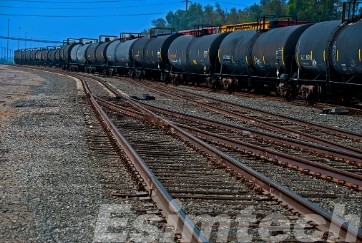
Understanding Truck Oil Transportation
Truck oil transportation involves the use of specialized tankers, which are large wheeled vehicles designed for this purpose. These oil tankers are able to transport oil over both short and long distances and are the primary means of transporting oil to distribution centers, refineries, and other areas that are not served by pipelines or rail. In these situations, road oil transport is the primary method for the last-mile distribution of smaller oil volumes.
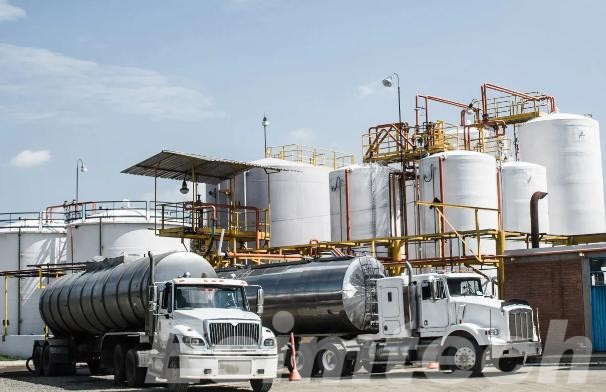
Advantages
- Flexibility
Trucks can get to almost anywhere there is a road. That means they can deliver oil to hard-to-reach places, small distribution points, or locations that lack pipelines or rail tracks. For this reason, truck transportation is particularly useful for last-mile deliveries. This is where oil is transported directly from refineries or storage tanks to the end users, including smaller storage facilities or gas stations.
- Accessibility
When an area does not have any railways or pipelines, or the available infrastructure is only partially developed, trucks are able to cover that shortfall. Because they can get to almost anywhere there is a road, and they can also travel on existing roadways, the need to construct new roads is greatly minimized. This makes it possible to rush trucks to a location and utilize them to transport oil in a very short time and at a very low cost.
- High Speed
One advantage of truck transportation is its speed over short distances. Unlike rail systems and pipelines, which are designed for long-distance transportation, trucks are capable of transporting oil over short distances quickly. It is also important to note that for time-sensitive deliveries, the quick turnaround of loading, transporting, and unloading cargo is crucial. In case of urgent demand for oil and limited transportation infrastructure, trucks will provide quick and uninterrupted transportation, unlike rail and pipeline systems which will cause delays.
- Lower Initial Capital Investment
Pipelines also require large upfront investments in infrastructure, unlike trucks which can be deployed with much lower initial capital. In many parts of the world, the roads are already in place, allowing oil transport companies to use pre-existing vehicles and routes, which also lowers the barrier for expansion. This is particularly valuable in the case of smaller oil operations, or within regions that contain variable demand, as the use of trucks streamlines operations much more than the construction of a pipeline.
- Under Control
Safety is another important aspect of oil transportation. The truck drivers and transport operators can easily manage and control speed, route, and schedule. This is especially important when compared to rail transport, where the transport operator has little to no control over the schedule or delays.

Limitations
- High Operating Cost
There is a high cost associated with acquiring large quantities of oil from a large geographic area. The fuel costs and ongoing maintenance expense of the trucks escalate very quickly. In addition to the distance, drivers must also be compensated. Each truck also has individual operational costs. When fuel costs and operational costs of the trucks are factored in, truck transportation is one of the costliest methods of oil transportation. In comparison to trucks, pipelines have relatively lower operational costs after the initial installation of the infrastructure.
- Environmental Impact
Trucks are powered with diesel fuel, which is a significant source of pollution and greenhouse emissions. In comparison to trucks, pipelines and railways have a lower environmental footprint and generally lower emissions per barrel transported. In emissions-heavy regions, diesel powered trucking poses a significant risk of increased emissions. While it is true that newer diesel engines are more efficient, the overall environmental impact of truck oil transportation remains higher than that of rail and pipelines.
- Low Capacity
In contrast to oil pipelines or railroads that have large transportation capacities, roads have the least. The volume of oil that can be transported by road is restricted by the capacity and the weight of the trucks. Each truck can carry 3000 to 4000 barrels of oil, and so, several trucks or repeated trips have to be made to transport large volumes, which is inefficient and costly. Due to this, trucks have an economic disadvantage in long-distance transportation of oil when large volumes are involved.
- Traffic Congestion and Delays
In addition to the truck regulatory and maintenance delays, deliveries are subject to and can be delayed by road traffic and weather conditions. Unlike the resolved pipeline transport which has no external traffic, road trucks share public highways with other vehicles and transport contractors. To this end, road delays can be caused by accidents and other control disruptions. In this way, geographies with high population and road traffic can negatively impact the dispatch of oil, thus lowering the industry and distributor confidence in road-based oil transportation.
- Safety Risks
Highways or busy city roads are particularly prone to car crashes and accidents, especially when oil tanker trucks are involved. Any accident can have devastating consequences. Spills can lead to highly dangerous fires or permanently contaminate large bodies of water. Fires and water contamination can lead to dangerous situations for the oil tanker truck and first responders. Modern tankers have features that help limit the risks mentioned, but compared to pipelines, they are still more prone to accidents. Pipelines are far safer and less incident prone.

A Comparative Analysis of Pipeline, Rail and Truck Oil Transportation
| Factor | Pipeline | Rail | Truck |
| Flexibility | Low (fixed routes) | High (adaptable to various routes) | Very High (can access almost any location) |
| Capacity | Very High (large volumes) | High (multiple tank cars per train) | Low (limited by truck and tank size) |
| Initial Investment | Very High (costly to build and install) | Medium (requires some infrastructure) | Low (existing roadways, low infrastructure cost) |
| Operating Costs | Low (minimal ongoing costs) | Medium (requires maintenance and fuel) | High (fuel, maintenance, driver wages) |
| Speed (for long distances) | Medium (continuous but slow) | High (relatively fast for long hauls) | High (ideal for short distances) |
| Safety | Very High (less prone to accidents) | Medium (derailment risk) | Medium (higher risk of accidents and spills) |
| Environmental Impact | Low (fewer emissions, underground) | Medium (diesel-powered, emissions) | High (diesel fuel, more emissions) |
| Capacity for Large Volumes | Very High (optimized for bulk transport) | High (can transport large loads) | Low (requires multiple trips) |
| Cost for Long Distance Transport | Low (economical for large quantities) | Medium (higher than pipelines but lower than trucks) | Very High (most expensive for long distances) |
| Route Availability | Limited (fixed infrastructure) | High (can access various regions) | Very High (can travel anywhere there are roads) |
| Maintenance Needs | Low (long lifespan, low maintenance) | Medium (requires upkeep of tracks and cars) | High (requires regular vehicle maintenance) |
| Vulnerability to Disruptions | Low (reliable once in place) | Medium (delays due to congestion or accidents) | High (affected by traffic, road conditions, accidents) |
| Security | Very High (difficult to tamper with) | Medium (vulnerable to theft, delays) | Low (vulnerable to theft, hijacking, accidents) |
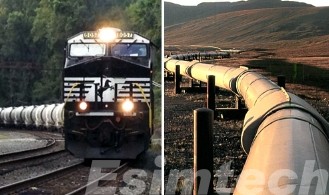
Key Factors to Consider for Choosing Among Pipeline, Rail and Truck Oil Transportation
Selection between utilizing pipelines, rail, or truck for oil transportation hinges on many factors. The required distance, volume of oil transported and other operational factors like safety, environment and cost are the foremost determinants.
- Volume of Oil
The amount of oil that needs to be transported determines the best transportation methods. For large quantities of oil, especially over extensive distances, pipelines are the most appropriate choice. After being established, pipelines transport oil indefinitely and in huge quantities. They represent the most dependable and economically efficient option for widespread oil transportation. In the case of mid-sized oil transport, rail transportation becomes more flexible as entire trains can be outfitted with several oil transport tank cars. However, for smaller last-mile deliveries, and smaller volumes of oil, it becomes much more efficient for trucks to be used as they are able to deliver oil to the end point, though in smaller quantities.
- Distance of Transport
Another important factor is the distance for transporting oil. For long distances, pipelines are the most effective. Pipelines are capable of functioning for hundreds, even thousands of miles, and only require simple maintenance while offering uninterrupted oil flow. For medium and long distances, rail transport is effective, and is also the most efficient mode of transport, particularly for regions where pipelines are not available. For short and medium distances, and also for last mile delivery, trucks are the most effective. They are able to transport oil to remote regions and places where pipelines and rail are not feasible. Nevertheless, for long distances, road transport is inefficient, and costly in comparison to rail and pipelines.
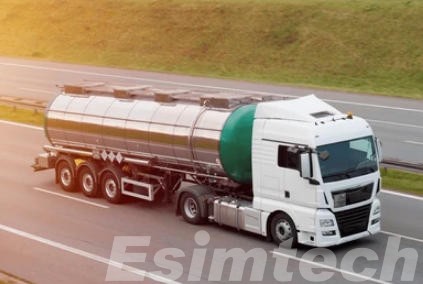
3. Cost Efficiency
When determining the ideal method for oil transportation, one has to look at the cost implications. A large pipeline investment implies land acquisition, construction of the pipeline, and environmental studies. However, for long-distance and high-volume oil transportation, pipelines are the most cost-effective option. Operating costs are low and maintenance requirements are infrequent. With rail, there are moderate operational costs due to the rail construction, railcars, and track maintenance, which tend to exceed pipeline operational costs. Rail is most cost-effective with medium-distance hauls and larger volumes, and even then, it is not as cost-effective as pipelines for long-haul transport. While trucking has the lowest capital investment, it has the highest operational costs as well. Fuel, maintenance, and labor are all necessary and expensive for long-distance transportation, meaning trucking is the most expensive method for large-volume transport.
4. Safety and Risk Management
Risk and safety are important to evaluate in oil transportation. This is because accidents, spills, and leaks can have disastrous outcomes. Pipes are thought to be the safest means of transporting oil. This is because they are less likely to have accidents. Pipes are also fixed and operate in remote environments which minimizes human exposure and reduces the probabilities of accidents occurring. Modern piping has very advanced self-monitoring technology which includes automated and self-activated leak detection as well as shut off valves. These significantly reduce the chance of spills occurring. In comparison, rail transport is also safe, but the chance of derailments and accidents are higher, particularly when oil transport trains are travelling through more urbanized areas. Oil transport train derailments can create seriously harmful environmental consequences and pose a great risk because they can cause fires and explosions. Truck transport is the least safe because it depends on road transport conditions, adverse weather, and driver inattention. Modern tankers are built to minimize accident potential, but the risk is still significantly higher than rail or pipelines.

5. Environmental Impact
The environmental ramifications of oil transportation require consideration. In the case of oil transportation through pipelines, they will eventually have a lower environmental impact. Transportation of oil via pipelines consumes much less energy, and emit fewer pollutants than oil transported via trucks and trains, particularly for extensive and prolonged transportation. Furthermore, pipelines are frequently placed below the earth’s surface, which effectively reduces their vision footprint. In contrast, rail transport, which is more energy efficient than oil trucking, still uses diesel engines, which emit greenhouse gases. For prolonged distances, rail is more environmentally friendly than trucking, but pipelines are still the most efficient. In contrast, trucks, with their diesel-powered engines, produce the highest levels of emissions per unit of oil transported. Furthermore, they are particularly detrimental in air pollution and carbon emissions for prolonged transport on road.

- Flexibility and Accessibility
Flexibility in transport routes has to be considered. With pipelines, flexibility will be the least of your worries. Once built, it is difficult to change the course of a pipeline. Adding to or expanding a pipeline will take considerable time and money. This will make it difficult to consider a pipeline for transport needs that are changeable. Of the transport modes, rail is the most flexible. Train routes can change and adapt to shifts in demand, although trains are still constrained to the rail network. Pipelines are limited in the number of points they can serve, so rail can reach a wider range of locations. Of all transport modes, trucks are the most flexible. With a robust road network, trucks can change routes, adjust to demand, and reach almost any place. This is why they are ideal for last-mile delivery, and for transporting oil to regions unserved by pipelines and rail.
- Regulatory and Political Considerations
Political and regulatory issues are also important when choosing a method of transporting oil. Pipelines are frequently impeded by time-consuming regulatory processes that require approvals for environmental impact studies, land acquisition, and legal disputes, especially for interstate and international projects. In politically sensitive areas or regions with strong environmental advocates, obtaining pipeline permits can become a very long and contentious regulatory process. Although rail transport is less encumbered by regulatory scrutiny than pipelines, it is still subject to government regulation concerning safety and the transport of hazardous materials. Unrestricted in regulatory terms compared to the other methods of transport, trucks still encounter substantial restrictions concerning the transport of oil, which is classified as a hazardous material, as well as safety standards surrounding the vehicle, driving hours, and general safety regulations.
Summary
- Pipelines are the most appropriate for long-term, high-volume, and cost-effective oil transport where minor environmental impact is needed, but they are inflexible.
- Rail offers a good balance of flexibility, capacity, and cost, making it ideal for large-scale oil transportation when pipelines are unavailable or not practical.
- Truck is most beneficial for short distances, last-mile deliveries and areas lacking pipelines or rail, but it is the most expensive and environmentally harmful method.

A Comparative Analysis of How Simulation Technologies are Used to Optimize Pipeline, Rail, and Truck Oil Transportation
| Factor | Pipeline Oil Transportation | Rail Oil Transportation | Truck Oil Transportation |
| Route Optimization | Oil transportation simulations model terrain, geography, and environmental factors to design the most efficient pipeline routes, minimizing energy use and costs. | Rail route optimization models allow for the selection of the most efficient paths, reducing travel time, fuel consumption, and wear on tracks. | Truck route simulation helps optimize delivery routes based on factors like road conditions, traffic, weather, and fuel consumption. |
| Capacity Planning | Simulations forecast oil demand and pipeline capacity, helping to plan expansions and ensure pipelines are operating at peak efficiency without overloading. | Rail simulation tools predict railcar demand, helping operators match supply with expected demand and optimizing scheduling. | Trucking companies use simulations to predict fleet needs, allowing for better vehicle allocation and reducing the number of trucks required for each delivery. |
| Scheduling and Timeliness | Pipeline simulations help manage the flow of oil through the system to avoid bottlenecks and ensure timely deliveries, especially for high-demand periods. | Rail simulations optimize train schedules, ensuring that trains run on time, avoid delays, and synchronize well with available loading and unloading times. | Simulations predict the optimal timing for truck deliveries, taking into account traffic patterns, driver shifts, and delivery windows to minimize delays. |
| Maintenance and Downtime | Simulation models can predict potential issues like pipeline leaks, corrosion, or wear-and-tear, allowing for preventive maintenance and reducing downtime. | Rail simulations allow for the prediction of maintenance needs based on wear and tear, track conditions, and usage, minimizing unplanned disruptions. | Truck maintenance simulation optimizes vehicle upkeep schedules based on usage patterns, helping to reduce downtime and increase fleet availability. |
| Safety and Risk Management | Pipeline simulation helps identify high-risk areas (e.g., seismic zones, environmental hazards), optimizing pipeline design and operations for safety. | Rail simulations help in safety planning by modeling derailment risks, accidents, and hazardous material transport to improve overall safety protocols. | Trucking companies use safety simulations to evaluate crash risks, optimal driving conditions, and the safe transport of hazardous materials, ensuring compliance with safety regulations. |
| Environmental Impact | Simulation technologies assess the environmental impact of pipeline construction and operations, helping to minimize ecological disruptions and optimize energy use. | Rail simulations model the environmental impact of fuel use and rail congestion, helping to minimize emissions and optimize energy consumption. | Truck simulations can predict fuel consumption and CO2 emissions, helping optimize routes and reduce environmental impact, especially in urban areas. |
| Fuel Efficiency | Simulations predict the most energy-efficient ways to pump oil through pipelines, including optimal pressure and flow rate settings to minimize energy use. | Rail transport simulations evaluate fuel consumption across various routes, helping to select the most fuel-efficient paths for oil transportation. | Trucking simulations predict the most fuel-efficient routes and driving patterns, minimizing fuel costs and reducing emissions. |
| Cost Optimization | Pipeline simulations help optimize construction costs, ongoing maintenance, and operational expenses, ensuring the pipeline remains profitable and efficient. | Rail simulation models forecast fuel and operational costs, allowing operators to optimize schedules and resource allocation to reduce overall transportation costs. | Truck simulation tools help in cost optimization by evaluating fleet sizes, routes, and fuel consumption, reducing transportation and logistics expenses. |
| Regulatory Compliance | Simulation technologies ensure that pipeline operations comply with environmental and safety regulations by modeling and forecasting compliance issues. | Rail simulations help ensure that rail operations meet regulatory safety standards for hazardous materials, emissions, and capacity restrictions. | Truck simulations help optimize routes in compliance with weight limits, speed restrictions, and safety regulations, ensuring smoother operations and fewer legal issues. |
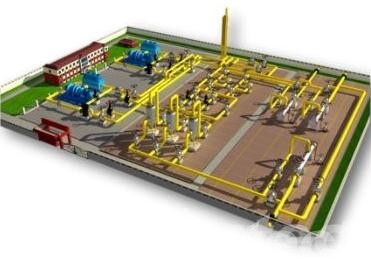
Summary
- For pipelines, simulations help optimize flow, capacity, and maintenance.
- Rail simulations focus on scheduling, capacity management and fuel optimization,
- Truck simulations help with route efficiency, safety, and cost savings.
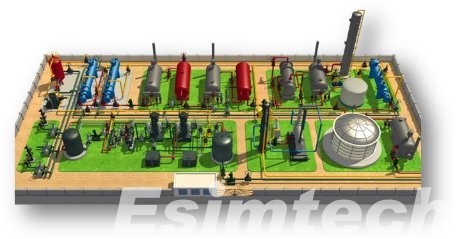
Final Thoughts
Regardless of the method of oil transportation, whether it be via pipelines, rail, or trucks, each has its own advantages and disadvantages depending on the location, distance, and the unique needs of the transportation logistics. The needs of the oil supply chain, the geographical area, and the established preferences of the stakeholders regarding costs, security, and ecological consequences determine the method of oil transportation.

Through adopting simulation technologies, the downtime, safety and environmental consequences of each method of oil transportation can be improved. Improved efficiency and reliability characteristics can be achieved by oil and gas simulations.
